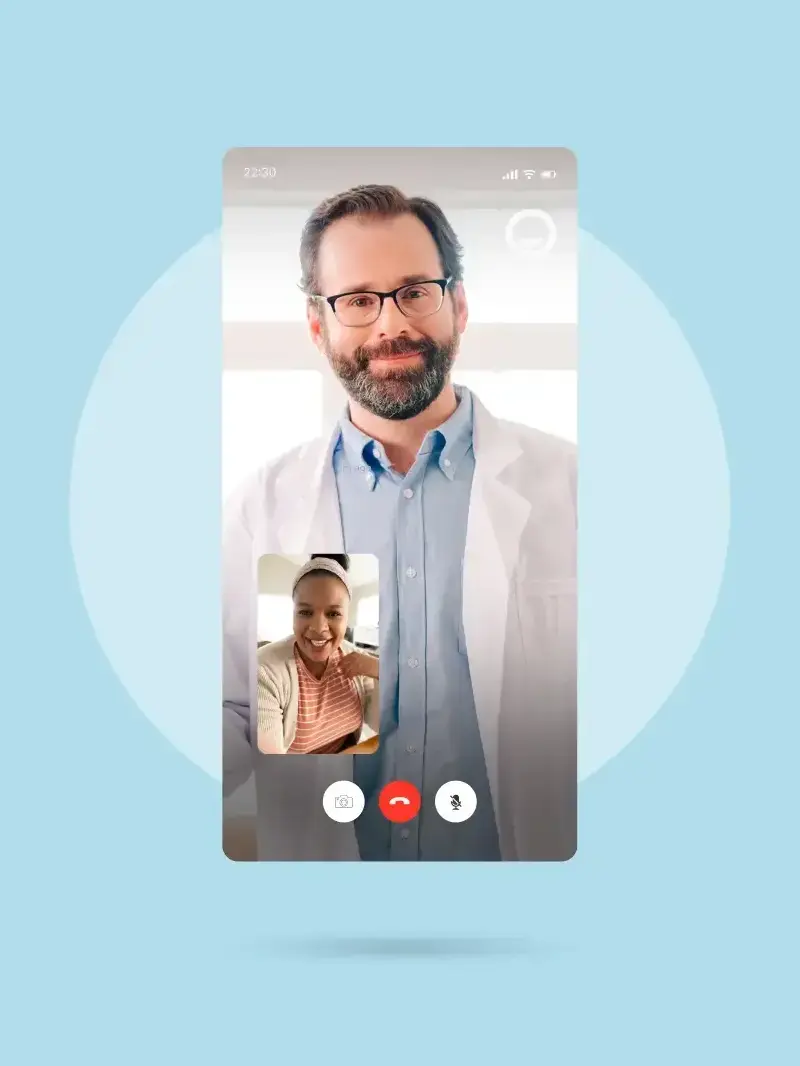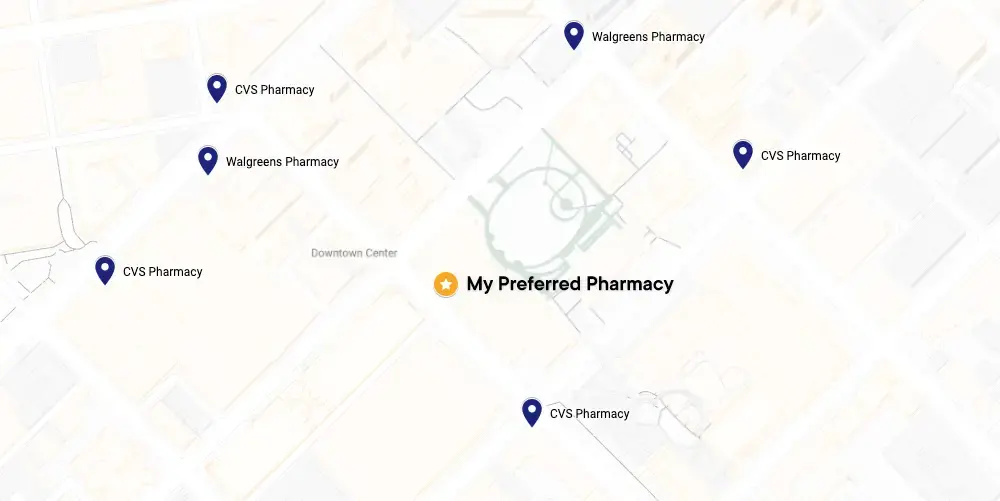
Soliqua (insulin glargine and lixisenatide) prescription available online
If you are suffering from type 2 diabetes mellitus, Soliqua can help. Get a new prescription or refill of Soliqua from a board-certified doctor online.*
About Soliqua
Some conditions that Soliqua is known to treat include type 2 diabetes mellitus. Soliqua is available only by prescription. It is available in a generic formulation under different brand names, including insulin glargine and lixisenatide.
Soliqua may be prescribed as an injection. It’s always important to follow the specific instructions on your prescription, as they can vary based on the formulation and dosage prescribed.
If you're prescribed Soliqua, complete the entire course of the diabetes treatment unless your healthcare provider specifically tells you to stop. If you don’t complete your prescription, the diabetes treatment may not fully treat your type 2 diabetes mellitus.
Soliqua uses
There is one FDA-approved use for Soliqua, but it may also be used off-label to treat other conditions. Your online healthcare professional may prescribe it for any of the following common reasons.
It’s also possible that healthcare professionals may prescribe it for other reasons not listed here. If you have questions about why a medication is prescribed, ask your online doctor or pharmacist.
Type 2 diabetes mellitus
Soliqua is not effective for the treatment of type 1 diabetes or diabetic ketoacidosis.
Soliqua side effects
The side effects associated with taking Soliqua 100/33 are typically mild. Most Soliqua side effects are associated with low blood sugar. Soliqua has some common side effects. They may include:
-
Low blood sugar levels
-
Nausea or diarrhea
-
Headache
-
Cold symptoms, such as sore throat or runny nose
-
Skin reaction at the injection site
Other side effects, which are less common but might be more severe, could include:
-
Low potassium or low blood pressure
-
Severe low blood sugar (hypoglycemia)
-
Sudden weight gain
-
Allergic reactions
-
Serious infection or severe rash at the injection site
You should call your healthcare professional if you notice any of these side effects, or if you develop any other new or concerning symptoms. It is not known whether Soliqua 100/33 is safe and effective in children under 18 years of age.
How to take Soliqua
Your pharmacist will provide you with instructions on how to take your Soliqua prescription. Be sure to read your prescription label and follow the instructions. Call your doctor or pharmacy if you have any questions.
Soliqua 100/33 can come in different forms and doses, so be sure to follow the specific instructions on your prescription. The typical starting dose for adults who aren't currently on basal insulin is 15 units subcutaneously once daily. For patients receiving 30–60 units of basil insulin, the starting dose is typically 30 units subcutaneously once daily.
Soliqua 100/33 should be injected under the skin once daily within an hour of eating your first meal. The maximum dose of Soliqua 100/33 is 60 units daily.
What to avoid while taking Soliqua
Soliqua has 395 drug interactions. Don’t change what you take without checking with your doctor or pharmacist. That includes other prescription drugs or supplements, as well as over-the-counter medicines.
Possible drug interactions with Soliqua include:
-
Tylenol (acetaminophen)
-
Birth control pills (take at least one hour before or 11 hours after Soliqua 100/33)
-
Other diabetes medicines, such as pioglitazone or rosiglitazone
Drinking alcohol while taking Soliqua 100/33 can cause severe low blood sugar (hypoglycemia) or high blood sugar (hyperglycemia), depending on how much you drink. Talk to your healthcare provider before you drink alcohol.
Medication alternatives to Soliqua
If your healthcare provider prefers to put you on another treatment altogether, they may suggest another basal insulin or other diabetes drugs in another drug class. Here are some common doctor-recommended alternatives based on your health issue:
Type 2 diabetes mellitus
Soliqua prescription FAQs
How much does Soliqua cost?
How can I refill my Soliqua prescription?
Who should not take Soliqua?
Avoid taking Soliqua 100/33 if you have certain medical conditions, such as:
-
Severe allergic reaction to insulin products
-
Pancreatitis or gallbladder disease
-
Problems digesting food
-
Liver or kidney disease
-
Heart failure
How long is Soliqua good for out of the fridge?
When is the best time to take Soliqua?
Where should I inject Soliqua?
What happens if I miss a dose of Soliqua?
What happens if I take too much Soliqua?
3 simple steps to request your Soliqua prescription today

Book a Soliqua prescription request appointment.

Talk to your medical provider regarding your Soliqua prescription.

Pick up your Soliqua prescription.
Soliqua prescription pricing details
30 days of free membership
- Same-day appointments 7 days a week
- Unlimited messages with your Care Team
- Prescription discount card to save up to 80%
- Exclusive discounts on lab tests
- Free memberships for your family
- Cancel anytime
Paying with insurance
Membership
$19.99
First month free
Visits
Copay
Visit price with insurance
Often the same as an office visit. Most patients with in-network insurance pay $30 or less!
We accept these insurance plans and many more:



Paying without insurance
Membership
$19.99
First month free
Visits
$129
Visit price without insurance
Soliqua prescription resources
Sources:
PlushCare is dedicated to providing you with accurate and trustworthy health information.
-
DailyMed. SOLIQUA 100/33- insulin glargine and lixisenatide injection, solution. Accessed on October 25, 2022. https://dailymed.nlm.nih.gov/dailymed/drugInfo.cfm?setid=4bba538b-cf7c-4310-ae8f-cb711ed21bcc
-
Food and Drug Administration. Soliqua 100/33 prescription label. Accessed on October 25, 2022. https://www.accessdata.fda.gov/drugsatfda_docs/label/2017/208673s002lbl.pdf
-
Mayo Clinic. Insulin Glargine And Lixisenatide (Subcutaneous Route). Accessed on October 25, 2022. https://www.mayoclinic.org/drugs-supplements/insulin-glargine-and-lixisenatide-subcutaneous-route/side-effects/drg-20313084?p=1
PlushCare content is reviewed by MDs, PhDs, NPs, nutritionists, and other healthcare professionals. Learn more about our editorial standards and meet the medical team. The PlushCare site or any linked materials are not intended and should not be construed as medical advice, nor is the information a substitute for professional medical expertise or treatment.